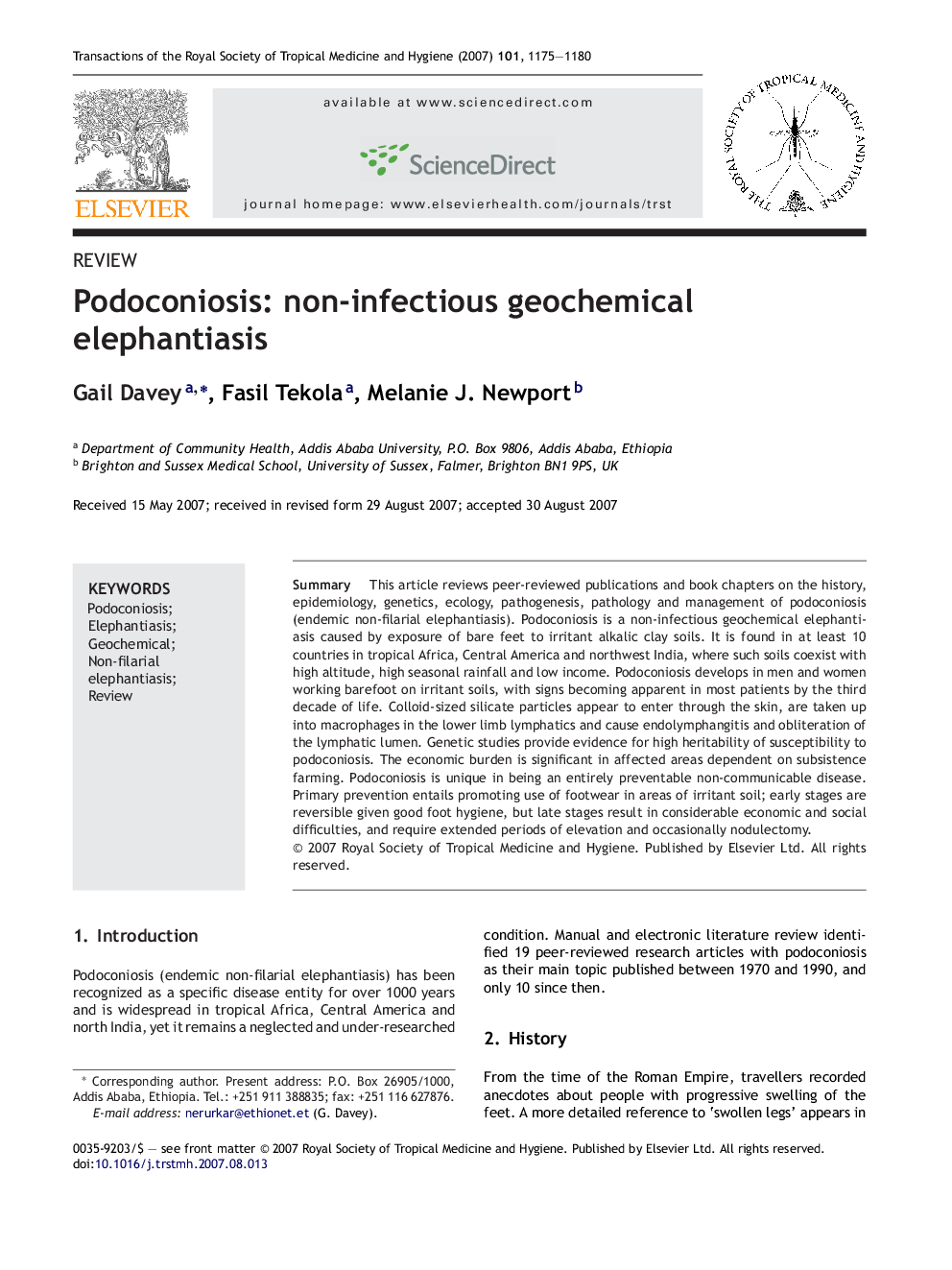| کد مقاله | کد نشریه | سال انتشار | مقاله انگلیسی | نسخه تمام متن |
|---|---|---|---|---|
| 6137516 | 1594027 | 2007 | 6 صفحه PDF | دانلود رایگان |
عنوان انگلیسی مقاله ISI
Podoconiosis: non-infectious geochemical elephantiasis
دانلود مقاله + سفارش ترجمه
دانلود مقاله ISI انگلیسی
رایگان برای ایرانیان
موضوعات مرتبط
علوم زیستی و بیوفناوری
ایمنی شناسی و میکروب شناسی
میکروبیولوژی و بیوتکنولوژی کاربردی
پیش نمایش صفحه اول مقاله

چکیده انگلیسی
This article reviews peer-reviewed publications and book chapters on the history, epidemiology, genetics, ecology, pathogenesis, pathology and management of podoconiosis (endemic non-filarial elephantiasis). Podoconiosis is a non-infectious geochemical elephantiasis caused by exposure of bare feet to irritant alkalic clay soils. It is found in at least 10 countries in tropical Africa, Central America and northwest India, where such soils coexist with high altitude, high seasonal rainfall and low income. Podoconiosis develops in men and women working barefoot on irritant soils, with signs becoming apparent in most patients by the third decade of life. Colloid-sized silicate particles appear to enter through the skin, are taken up into macrophages in the lower limb lymphatics and cause endolymphangitis and obliteration of the lymphatic lumen. Genetic studies provide evidence for high heritability of susceptibility to podoconiosis. The economic burden is significant in affected areas dependent on subsistence farming. Podoconiosis is unique in being an entirely preventable non-communicable disease. Primary prevention entails promoting use of footwear in areas of irritant soil; early stages are reversible given good foot hygiene, but late stages result in considerable economic and social difficulties, and require extended periods of elevation and occasionally nodulectomy.
ناشر
Database: Elsevier - ScienceDirect (ساینس دایرکت)
Journal: Transactions of the Royal Society of Tropical Medicine and Hygiene - Volume 101, Issue 12, December 2007, Pages 1175-1180
Journal: Transactions of the Royal Society of Tropical Medicine and Hygiene - Volume 101, Issue 12, December 2007, Pages 1175-1180
نویسندگان
Gail Davey, Fasil Tekola, Melanie J. Newport,